In Texas gaucamole is omnipresent. There are as many recipes as there are bragging-prone machos. 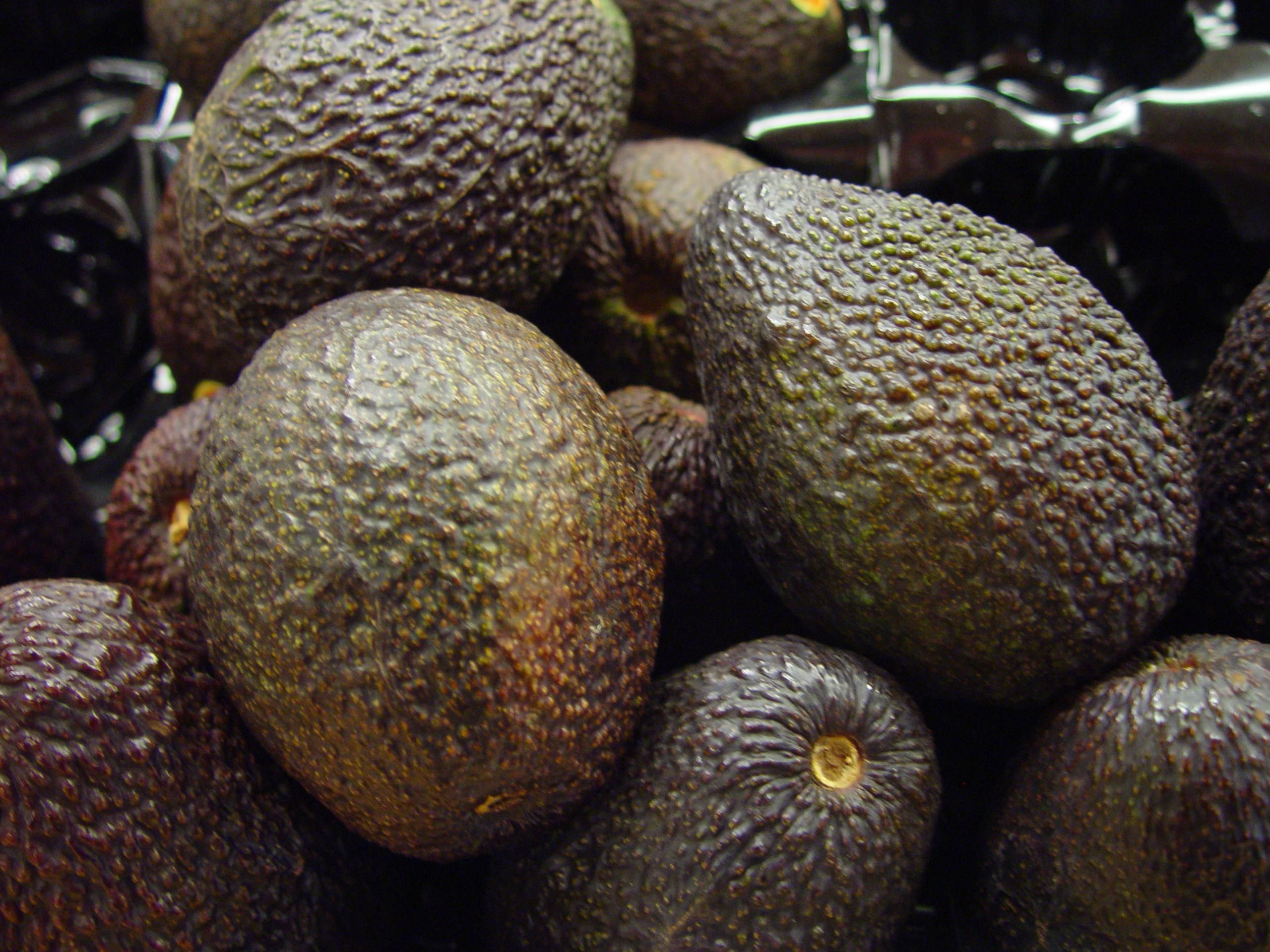 I myself not being one to brag,, Ahem.., my recipe is based on 3 simple rules.
I myself not being one to brag,, Ahem.., my recipe is based on 3 simple rules.
1. Purchase them Green and Hard.
Rodolfo Fernandez is the top Avocado expert in our region. For many years he provided the best-tasting avocados to Mexican restaurants throughout San Antonio. I follow his advice. At the produce section, purchase Haas aguacates while they are still green and very firm. Store them in a bag, plastic or paper, and wait two days, maybe three, at which time they'll begin to ripen and soften. It is then that they are at their peak of flavor. There is no substitute for this direct, natural taste. You'll say, wow.
2. No Masks.
The fresh, full flavor of the avocado takes nicely to complementary seasonings and accompaniments but be judicious. At all costs do not mask the texture or flavor of the aguacate.
3. Use a Molcajete.
In the recipe below I explain how the foundational flavor is developed in a molcajete.
Avocado is aguacate in Spanish and aguacate is derived from the original Nahuatl name, "Ahucacahuitl."
The name appears in early writings, MesoAmerican hieroglyphs, documenting that the Avocado is native to Puebla, Mexico. Here is an original glyph of an avocado tree linked to the place where the tree originates, the town of "Ahuacatlán." (1) The earliest remains of avocado consumption, 8,000-7,000 BCE, have been found in a cave in what is currently Coxcatlán in the state of Puebla, Mexico. From there the little lush fruit travelled and developed. There are three botanical types of avocados, Mexican, Guatemalan and Antillean.
avocado tree linked to the place where the tree originates, the town of "Ahuacatlán." (1) The earliest remains of avocado consumption, 8,000-7,000 BCE, have been found in a cave in what is currently Coxcatlán in the state of Puebla, Mexico. From there the little lush fruit travelled and developed. There are three botanical types of avocados, Mexican, Guatemalan and Antillean.  This map (2) lists where the origins of each of the types may have developed. Notice that the Mexican avocado is within the current TexMex area.
This map (2) lists where the origins of each of the types may have developed. Notice that the Mexican avocado is within the current TexMex area.
So enjoy this recipe knowing, again, that for millenia our land has nurtured us with delicious fruits and wonderful cooks. Hmmmmm!
Recipe: serves 6 -- thanks to Chef Roberto Santibañez whom I met in San Antonio and on whose book this is based.
Ingredients:
2 Haas avocados
1/2 Tbsp Green Serrano chile, sliced
1/2 Tbsp fresh cilantro, finely chopped
1 tspn white onion, small dice
1 tspn salt
1/4 cup tomato, small dice
2 Tbsp white onion, small dice
2 Tbsp fresh cilantro, coarsely chopped
Method:
1. Using a molcajete, make a fine paste of the onion, chile, cilantro and salt.
Here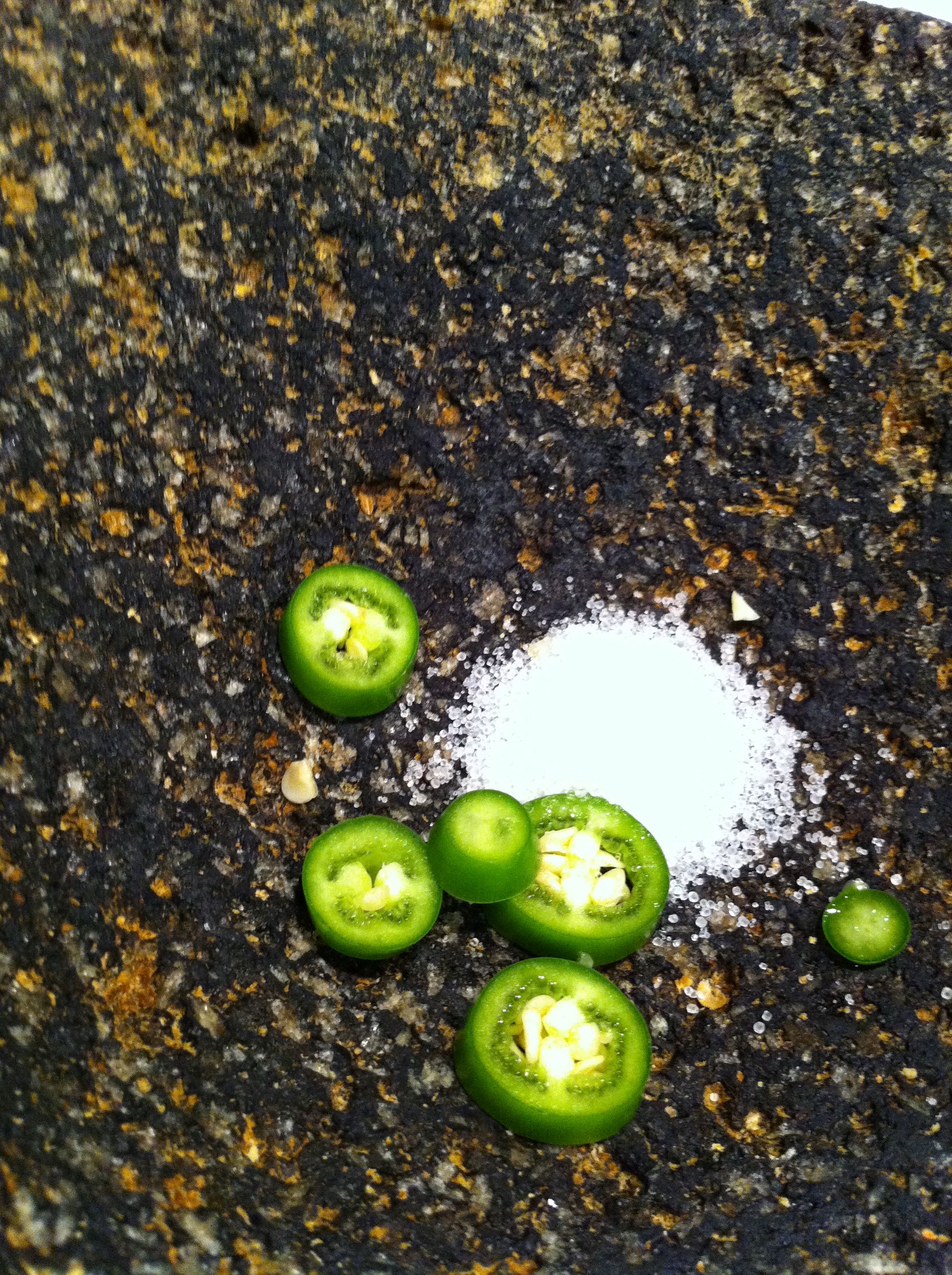 is where
is where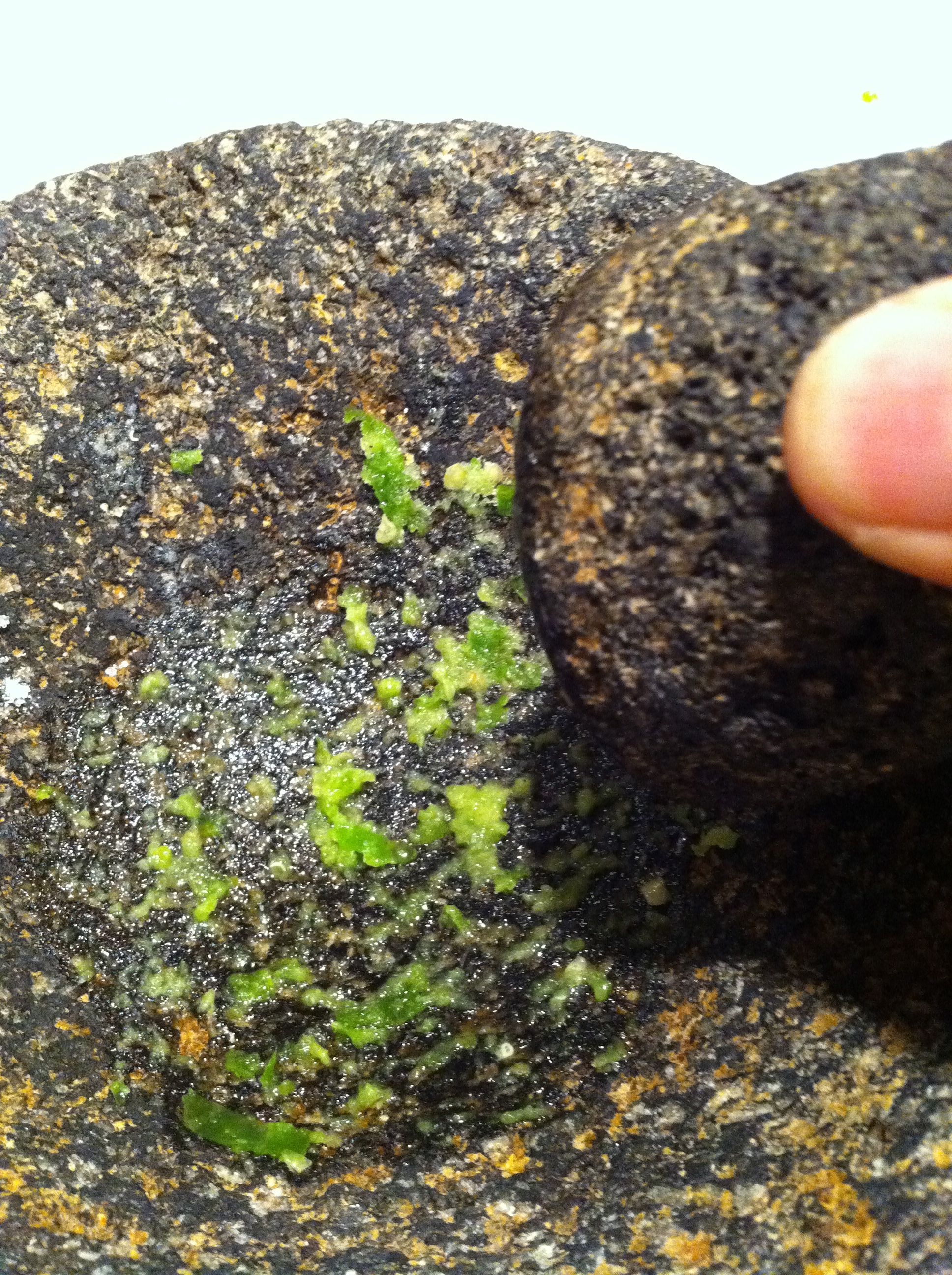 I mentioned that you can develop the flavor direction that your guacamole will take. You may add other seasonings to the molcajete, but keep in mind that you are following many years of tradition. Make sure your variations are culturally relevant, enticing to the palette, and not just vacuously trendy.
I mentioned that you can develop the flavor direction that your guacamole will take. You may add other seasonings to the molcajete, but keep in mind that you are following many years of tradition. Make sure your variations are culturally relevant, enticing to the palette, and not just vacuously trendy.
2. Dice the avocado and add to the molcajete, scraping and folding to make sure the avocado is covered with the seasonings.
3. Add the remaining tomato, cilantro and onion.
4. Serve immediately with crispy corn tortilla chips.
Guacamole con Frutas (3) Serves 6
Ingredients:
2 Haas avocados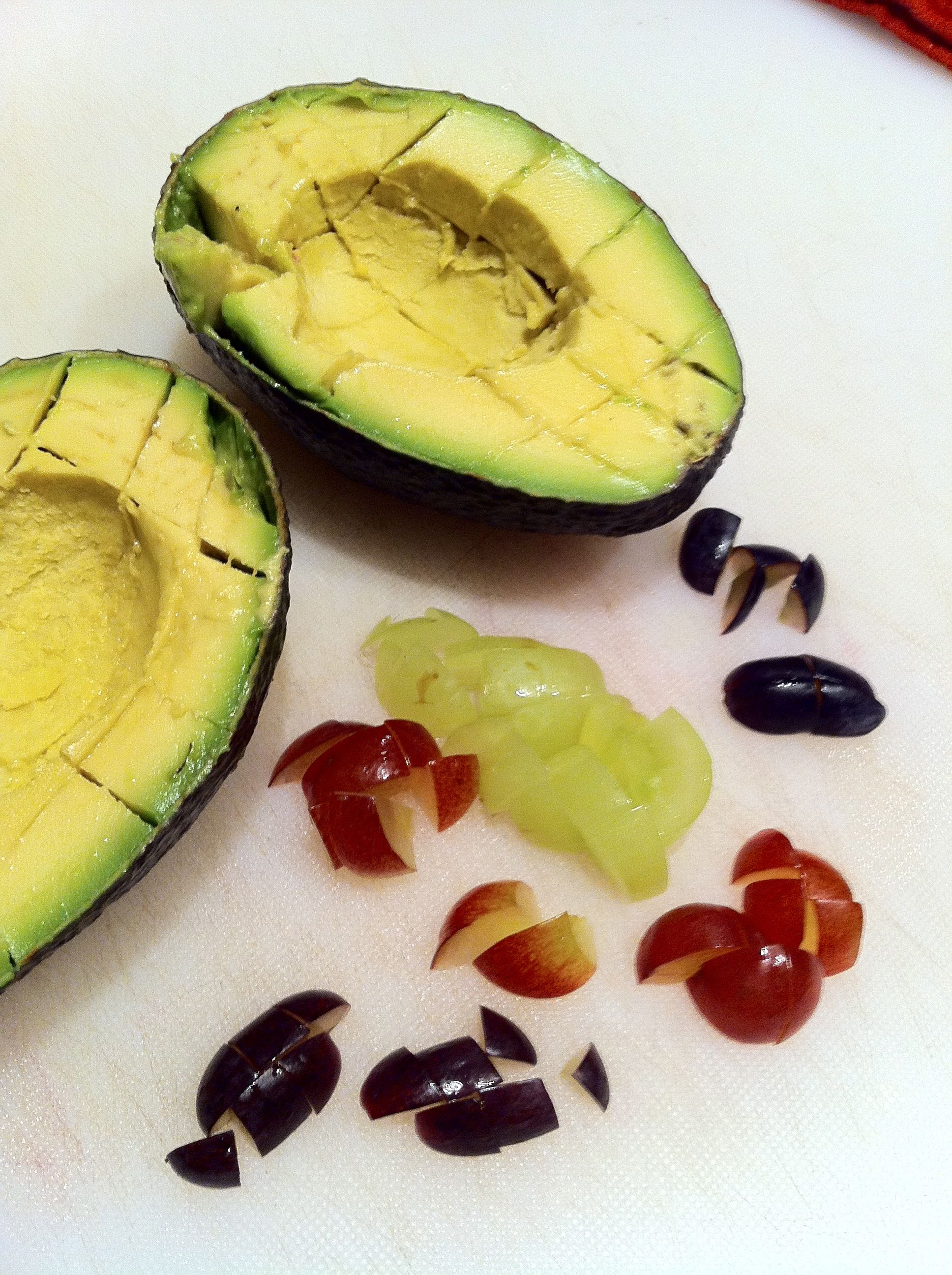
3/4 cup fresh mango, small cubes
10 red seedles grapes, halved
10 green seedless grapes, halved
1/2 cup pomegranate seeds
1/2 Tbsp Green Serrano chile, sliced. Note: I like to add more chile than this because I love the sweet fruit taste with the serrano flavor. But start with this amount and then see if you want to increase the serrano flavor.
1/4 cup tomato, small dice
1 tspn salt
Method:
1. Make the molcajete paste as above, of course there is no cilantro.
2. After combining the avocados with the molcajete paste, fold in the fruits.
3. Adjust the salt. Garnish with additional pomegranate and serve with crispy corn tortilla chips.
Buen provecho, TexMex!
NOTES:
(1) HISTORIA DEL AGUACATE EN MÉXICO, Salvador Sánchez Colín, Pedro Mijares Oviedo, Luis López-López, Alejandro F. Barrientos-Priego.
(2) HISTORIA DEL AGUACATE EN MÉXICO, Salvador Sánchez Colín, Pedro Mijares Oviedo, Luis López-López, Alejandro F. Barrientos-Priego.

 I myself not being one to brag,, Ahem.., my recipe is based on 3 simple rules.
I myself not being one to brag,, Ahem.., my recipe is based on 3 simple rules.1. Purchase them Green and Hard.
Rodolfo Fernandez is the top Avocado expert in our region. For many years he provided the best-tasting avocados to Mexican restaurants throughout San Antonio. I follow his advice. At the produce section, purchase Haas aguacates while they are still green and very firm. Store them in a bag, plastic or paper, and wait two days, maybe three, at which time they'll begin to ripen and soften. It is then that they are at their peak of flavor. There is no substitute for this direct, natural taste. You'll say, wow.
2. No Masks.
The fresh, full flavor of the avocado takes nicely to complementary seasonings and accompaniments but be judicious. At all costs do not mask the texture or flavor of the aguacate.
3. Use a Molcajete.
In the recipe below I explain how the foundational flavor is developed in a molcajete.
Avocado is aguacate in Spanish and aguacate is derived from the original Nahuatl name, "Ahucacahuitl."
The name appears in early writings, MesoAmerican hieroglyphs, documenting that the Avocado is native to Puebla, Mexico. Here is an original glyph of an
 avocado tree linked to the place where the tree originates, the town of "Ahuacatlán." (1) The earliest remains of avocado consumption, 8,000-7,000 BCE, have been found in a cave in what is currently Coxcatlán in the state of Puebla, Mexico. From there the little lush fruit travelled and developed. There are three botanical types of avocados, Mexican, Guatemalan and Antillean.
avocado tree linked to the place where the tree originates, the town of "Ahuacatlán." (1) The earliest remains of avocado consumption, 8,000-7,000 BCE, have been found in a cave in what is currently Coxcatlán in the state of Puebla, Mexico. From there the little lush fruit travelled and developed. There are three botanical types of avocados, Mexican, Guatemalan and Antillean.  This map (2) lists where the origins of each of the types may have developed. Notice that the Mexican avocado is within the current TexMex area.
This map (2) lists where the origins of each of the types may have developed. Notice that the Mexican avocado is within the current TexMex area.So enjoy this recipe knowing, again, that for millenia our land has nurtured us with delicious fruits and wonderful cooks. Hmmmmm!
Recipe: serves 6 -- thanks to Chef Roberto Santibañez whom I met in San Antonio and on whose book this is based.
Ingredients:
2 Haas avocados
1/2 Tbsp Green Serrano chile, sliced
1/2 Tbsp fresh cilantro, finely chopped
1 tspn white onion, small dice
1 tspn salt
1/4 cup tomato, small dice
2 Tbsp white onion, small dice
2 Tbsp fresh cilantro, coarsely chopped
Method:
1. Using a molcajete, make a fine paste of the onion, chile, cilantro and salt.
Here
 is where
is where I mentioned that you can develop the flavor direction that your guacamole will take. You may add other seasonings to the molcajete, but keep in mind that you are following many years of tradition. Make sure your variations are culturally relevant, enticing to the palette, and not just vacuously trendy.
I mentioned that you can develop the flavor direction that your guacamole will take. You may add other seasonings to the molcajete, but keep in mind that you are following many years of tradition. Make sure your variations are culturally relevant, enticing to the palette, and not just vacuously trendy.2. Dice the avocado and add to the molcajete, scraping and folding to make sure the avocado is covered with the seasonings.
3. Add the remaining tomato, cilantro and onion.
4. Serve immediately with crispy corn tortilla chips.
Guacamole con Frutas (3) Serves 6
Ingredients:
2 Haas avocados

3/4 cup fresh mango, small cubes
10 red seedles grapes, halved
10 green seedless grapes, halved
1/2 cup pomegranate seeds
1/2 Tbsp Green Serrano chile, sliced. Note: I like to add more chile than this because I love the sweet fruit taste with the serrano flavor. But start with this amount and then see if you want to increase the serrano flavor.
1/4 cup tomato, small dice
1 tspn salt
Method:
1. Make the molcajete paste as above, of course there is no cilantro.
2. After combining the avocados with the molcajete paste, fold in the fruits.
3. Adjust the salt. Garnish with additional pomegranate and serve with crispy corn tortilla chips.
Buen provecho, TexMex!
NOTES:
(1) HISTORIA DEL AGUACATE EN MÉXICO, Salvador Sánchez Colín, Pedro Mijares Oviedo, Luis López-López, Alejandro F. Barrientos-Priego.
(2) HISTORIA DEL AGUACATE EN MÉXICO, Salvador Sánchez Colín, Pedro Mijares Oviedo, Luis López-López, Alejandro F. Barrientos-Priego.
(3) Printed in Classic Cuisines of Mexico by Chef Iliana De La
Vega, Culinary Institute of America, adapted from Roberto
Santibañez and he from Diana Kennedy and María Dolores Torres-Izabal.

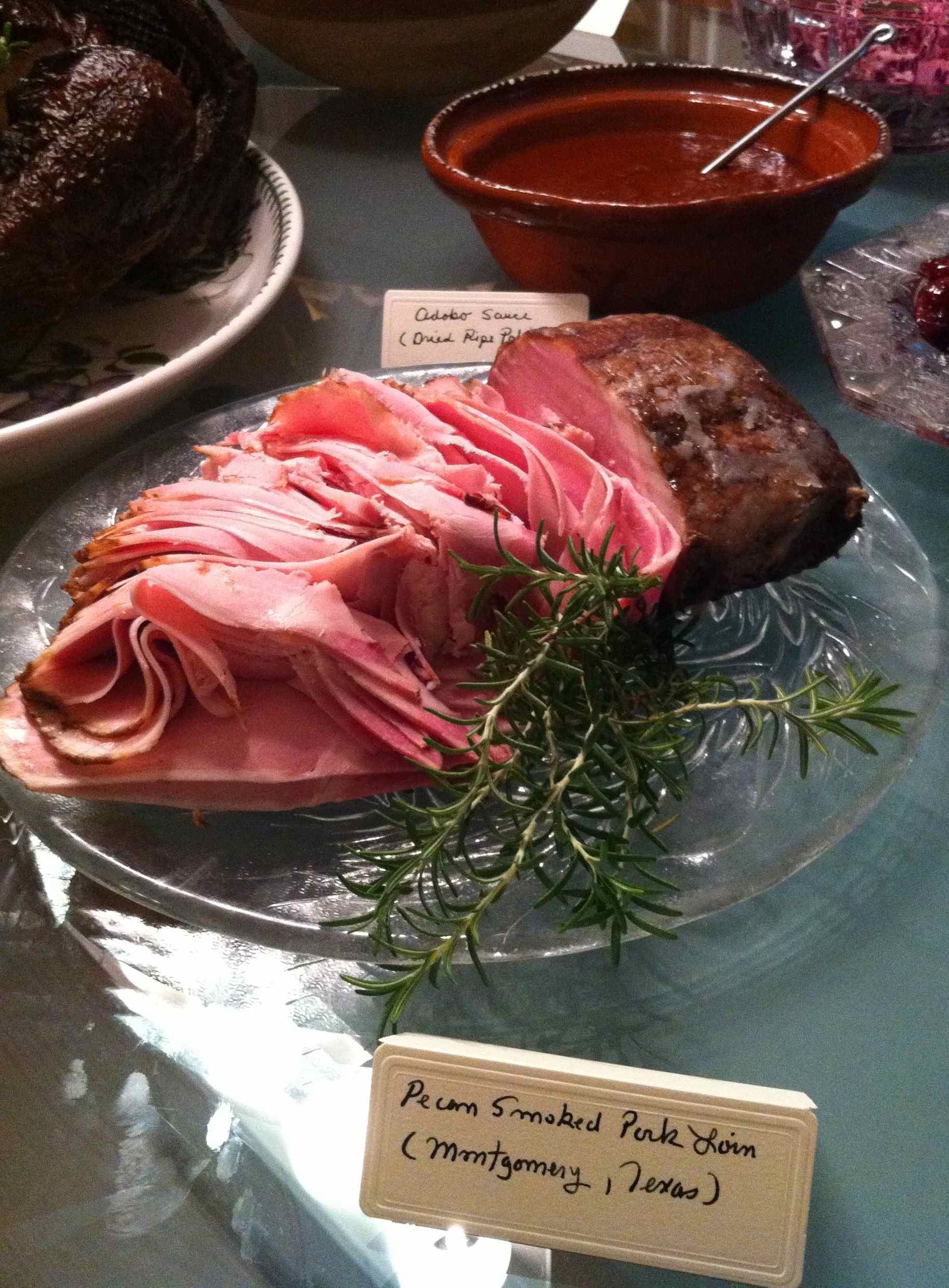 By keeping the temperature at 185º F and making sure the smoke does not turn densely white, the smoke flavor is subtle, sweet. I'm feeling giddy since I served it, so I'll paraphrase a line from the movie, Who's Killing the Great Chefs of Europe: "ever-new arising vistas of harmonizing flavors!"
By keeping the temperature at 185º F and making sure the smoke does not turn densely white, the smoke flavor is subtle, sweet. I'm feeling giddy since I served it, so I'll paraphrase a line from the movie, Who's Killing the Great Chefs of Europe: "ever-new arising vistas of harmonizing flavors!" 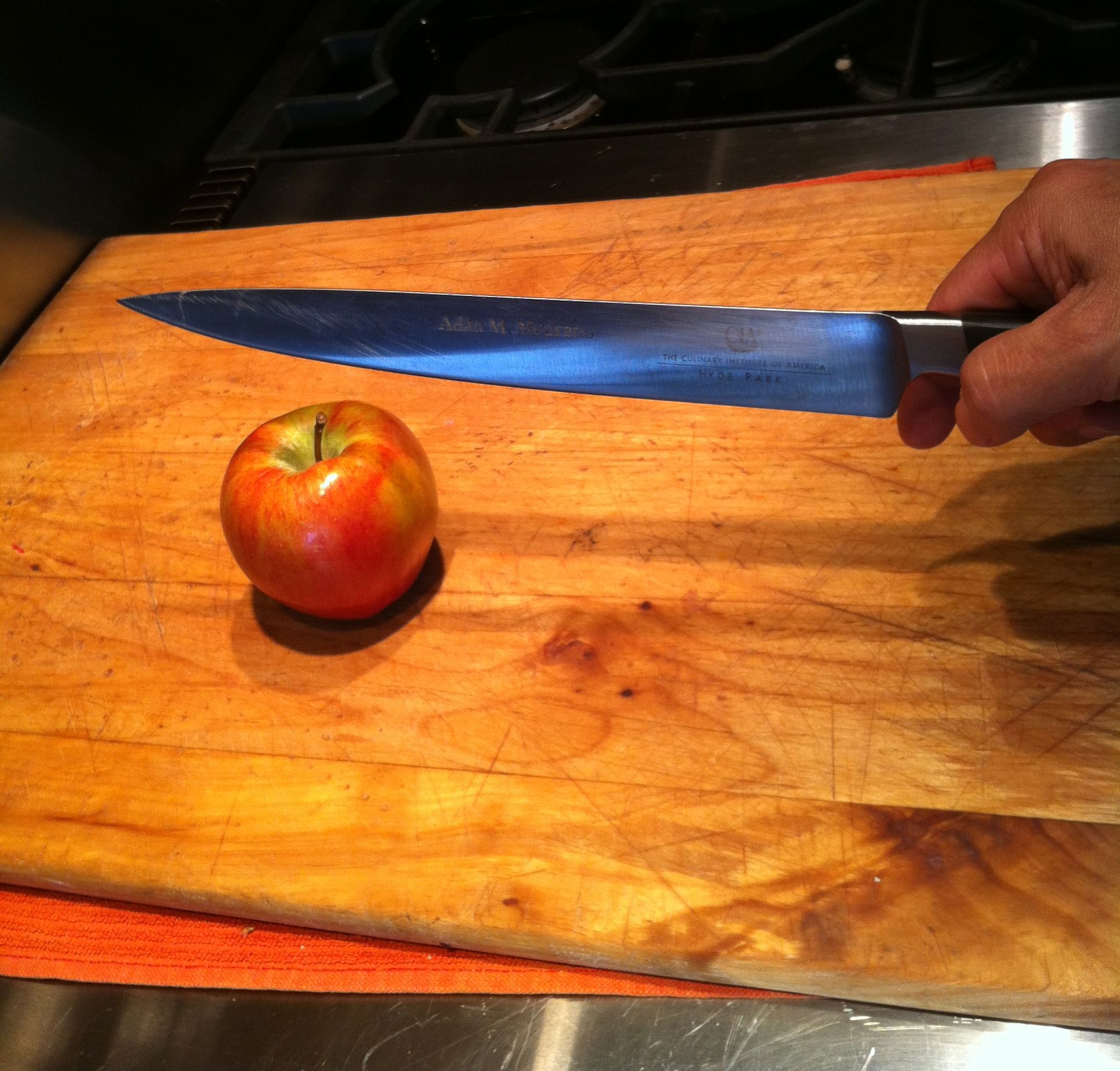
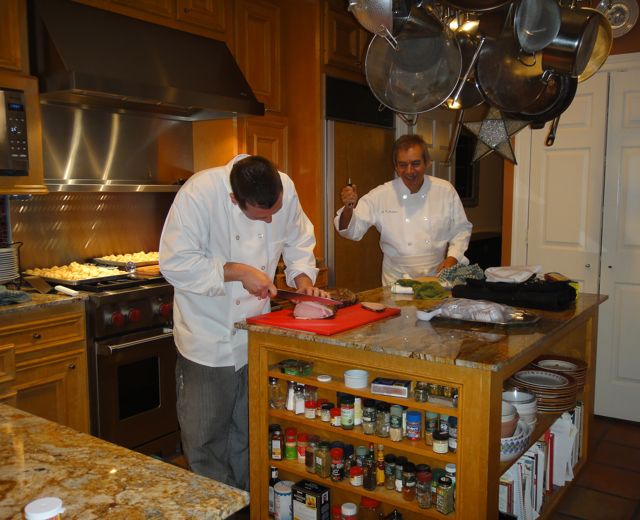 Here I am encouraging Chef Kevin Babbitt to cut the pork wafer-thin and with precision! Bon Appétit.
Here I am encouraging Chef Kevin Babbitt to cut the pork wafer-thin and with precision! Bon Appétit. Karla McLaughlin drove all the way to my home to deliver this 15 pound organic-fed, free-roaming turkey and two pork loins. She generously took the time because I was in a pinch, facing a party deadline. She is a one-of-a-kind farm owner. Knowledgeable, caring and meticulously strict about raising the turkeys and other animals that she and her husband, John, tend on their farm.
Karla McLaughlin drove all the way to my home to deliver this 15 pound organic-fed, free-roaming turkey and two pork loins. She generously took the time because I was in a pinch, facing a party deadline. She is a one-of-a-kind farm owner. Knowledgeable, caring and meticulously strict about raising the turkeys and other animals that she and her husband, John, tend on their farm.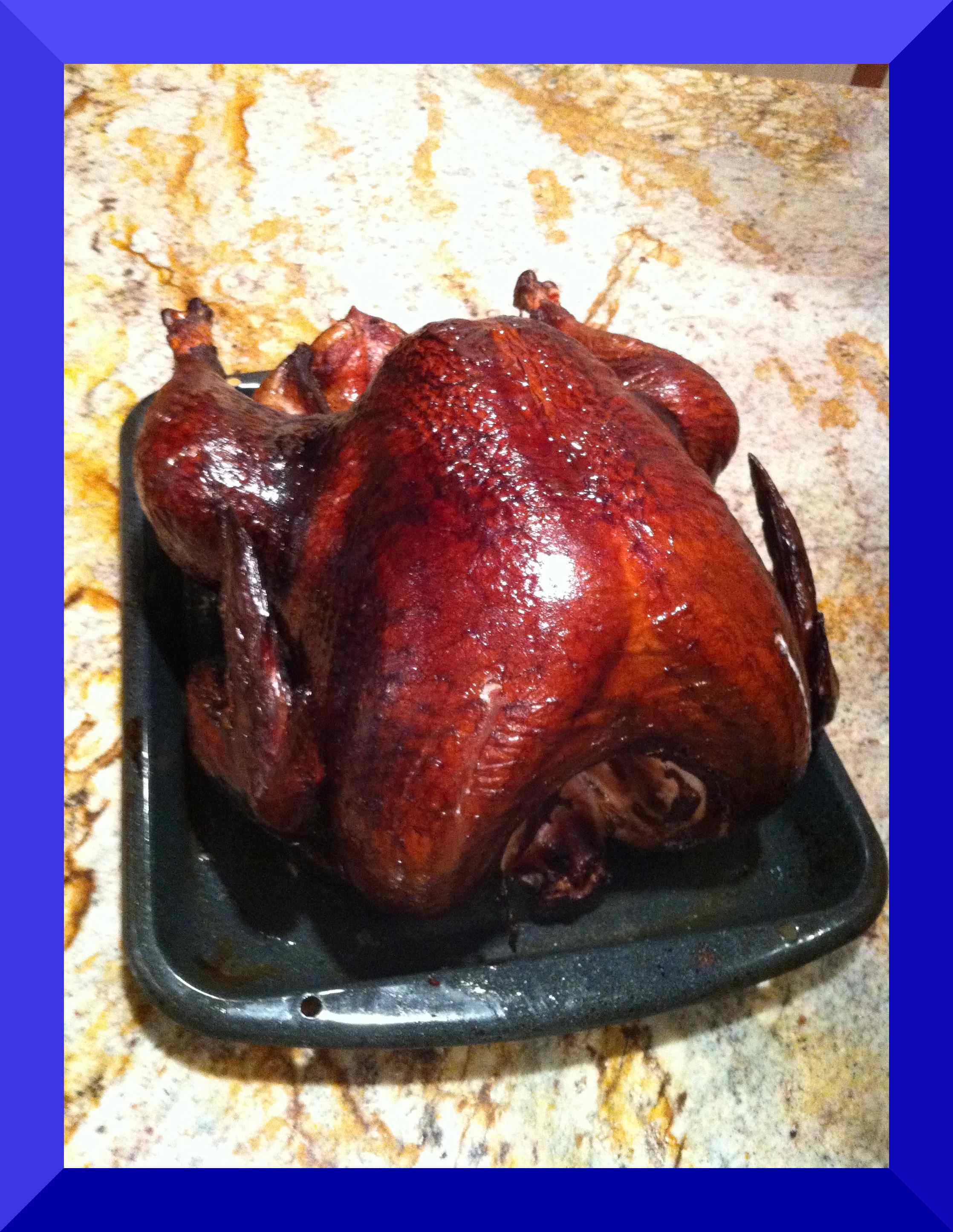
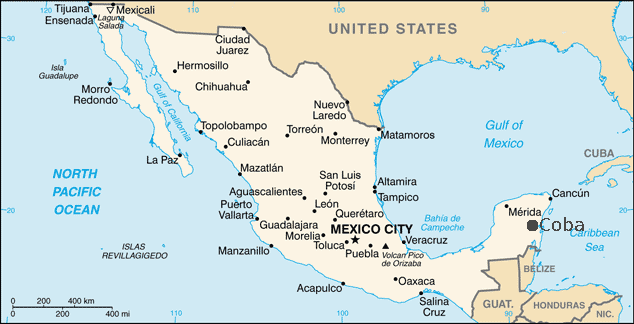 I've placed a dot on the location of Coba, Mexico, near Cancún.(1) This is where archeologists have found the earliest evidence of turkey remains. They are dated 100 BCE-100 CE. From there the turkey went north and populated North America, evidence of the vibrant trade and communication withiin the region pre-1400's. By the time the Spaniards arrived in Mexico, we had domesticated turkeys not just in Mexico but also in what is now the US New Mexico and Texas. Thereafter the turkey, wild and domesticated, populated the whole of the US and some of Canada. By your second beer, you will have pondered that we and the turkey go back a long way.
I've placed a dot on the location of Coba, Mexico, near Cancún.(1) This is where archeologists have found the earliest evidence of turkey remains. They are dated 100 BCE-100 CE. From there the turkey went north and populated North America, evidence of the vibrant trade and communication withiin the region pre-1400's. By the time the Spaniards arrived in Mexico, we had domesticated turkeys not just in Mexico but also in what is now the US New Mexico and Texas. Thereafter the turkey, wild and domesticated, populated the whole of the US and some of Canada. By your second beer, you will have pondered that we and the turkey go back a long way. 










Recent Comments